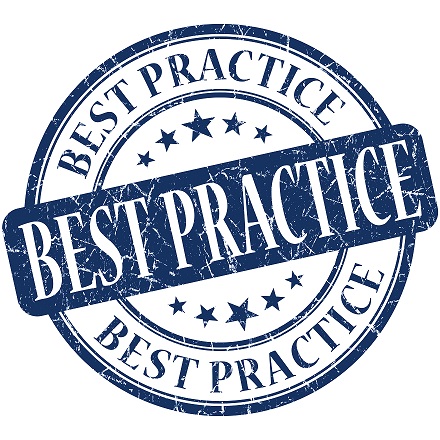ERP a Catalyst for Best Practice
Many companies use a new ERP implementation as a catalyst to adopt best business practice. It is the most popular goal we encounter in our ERP Selection and Implementation projects. But when we survey companies who have implemented a new ERP system, only about half of them manage to achieve best practice adoption. Why the disconnect? Best business practices sound like motherhood and apple pie, but the fact of the matter is that it is not easy.
Common Barriers to Best Practice
There are many barriers to achieving best practices. Four things need to happen to be successful.
First, the ERP tool needs to be designed to support best practice. As a general rule, the brand name ERP systems fit this bill.
Second, your consultants need to introduce best practice-based business processes during the design and configuration implementation activities. Again, most experienced consultants are fluent in these best practices.
Third, while working with the consultants, your internal implementation team needs to understand and accept the change to your business processes. This element is the primary barrier to achieving best practices with an ERP transformation project.
And lastly, the end users need to learn and adopt the new approach during cutover to the new system.
Like Pushing a Rock Uphill
To illustrate the primary barrier to achieving best practice, imagine your staff is accustomed to pushing a rock uphill. You’re implementing a new ERP tool because these rocks are getting bigger and growth has turned up the volume on the number of rocks you’re having to push. You want to work smarter, not harder.

Switchback is a Best Practice
The consultants come in and describe the concept of a switchback, a best business practice for rolling rocks uphill. Never before have your team members seen a switchback. It’s a foreign concept. On the surface, it seems ridiculous to have to travel 5 times the distance to get the rock to the top. Embracing this different approach requires a very analytical thought process to visualize and understand how the best practice achieves the same outcome but in a better manner.
Keys to Success
So, what can you do to improve your odds of successfully adopting best practices? First and foremost, dedicate your best and brightest staff to lead your implementation. This includes both assigning the right individuals and allocating enough of their time to participate in the analysis and implementation process. Executives need to support their decisions and they’re more likely to trust these individuals, without having to participate in the exhaustive discussions and analysis involved in system design and config. Likewise, end users are generally more apt to change if it’s led by their most highly respected leaders.
Other Ways to Drive Adoption
What are some other levers you can use to drive best practice adoption?
- Conduct an ERP tool evaluation with appropriately detailed demonstrations presented to a broad audience to set everyone’s expectations and introduce that ‘best practice’ flavor the group has never before tasted.
- Establish a good decision protocol or governance process for your project.
- Empower your implementation leads to make design decisions. As a general rule, the consulting role is to present the options, but the company is responsible to decide.
- An implementation is made up of thousands of decisions, many of which build upon the others. Making too many of these decisions by committee will elongate your implementation by two or three times the length.
- Empowering your team leads to decide the design also helps maintain the ideal implementation pace – too fast and team leads may oversimplify the scenarios and miss many of the exception cases, which will come back to haunt you later; too slow and they forget why they made the decision that way and end up wasting time revisiting those choices all over again.
- Establish clear guidelines for where it is appropriate to deviate and incorporate your own ‘special sauce’ unique approach to doing business.
- Also, you should document these decisions as you go. Follow the rule, “if it’s not documented, it’s not decided”.
- Where you have chosen to embed best practice and change your business processes, use the implementation testing cycles as an opportunity to prove these new concepts with your own data and scenarios before finalizing the change.
- Finally, communication, user acceptance testing and training are required to make the transition through cutover and into ongoing support of the new best practice-based business processes.
We hope this information was of value to you. Please contact us if you would like to learn more.







